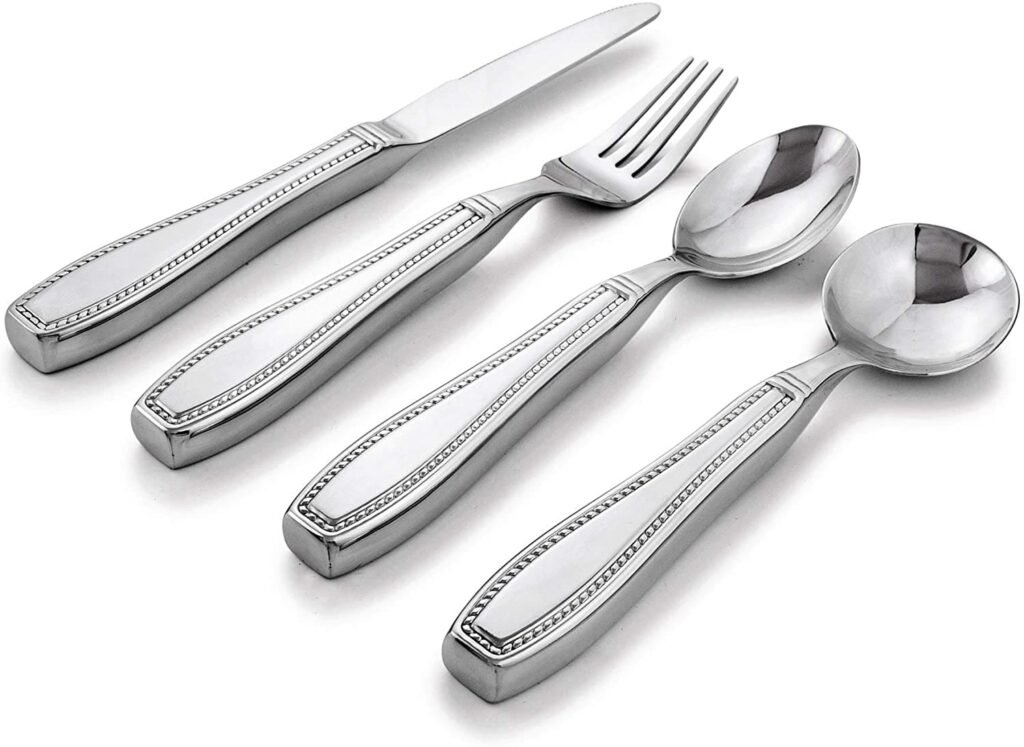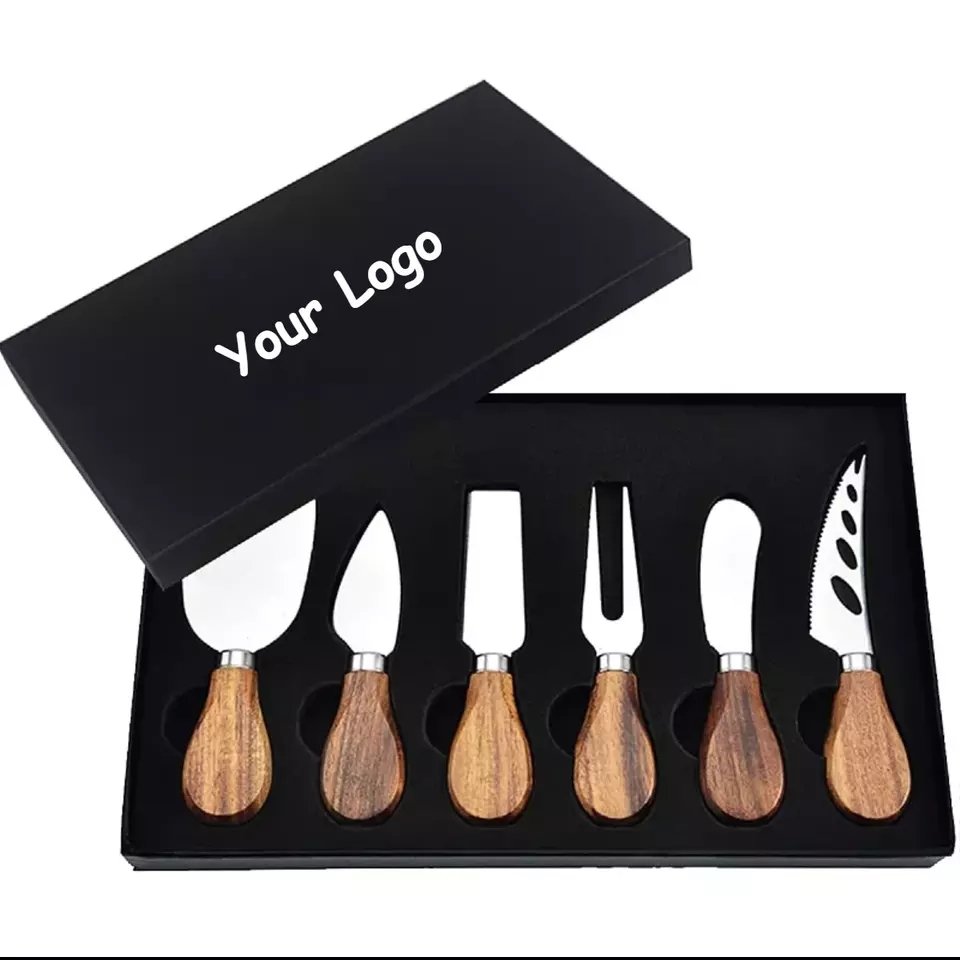Eating should be simple. But for many seniors, it becomes a frustrating, even painful task.
Adaptive utensils for elderly people make eating safer, easier, and more comfortable by solving common problems like hand weakness, tremors, and joint pain.
I’ve worked closely with care homes, retailers, and importers over the past 10 years. Each time, I’ve seen how the right utensil can turn a meal from a challenge into a relief. In this post, I’ll show you how and why adaptive utensils matter—and how to choose or source the right ones for senior needs.
Table of Contents

Why do elderly people need adaptive utensils?
Arthritis, hand tremors, and muscle loss can make holding normal utensils difficult.
Elderly people need adaptive utensils because traditional cutlery often causes pain, spills, or frustration during meals due to limited mobility and grip strength.
Understanding the daily struggle
When older adults lose hand strength or flexibility, even lifting a spoon becomes a task. Some can’t rotate their wrists. Others drop food from trembling hands. Regular utensils are made for people with full mobility—they don’t support these limitations.
Common conditions requiring adaptation
| Condition | Difficulty during mealtime | Needed Utensil Adaptation |
|---|---|---|
| Arthritis | Painful joint movement, tight grip | Thick, cushioned handle |
| Parkinson’s Disease | Uncontrolled tremors | Weighted or stabilizing spoon |
| Stroke (Hemiparesis) | One-sided weakness | Angled or one-handed design |
| General aging | Reduced muscle strength, coordination | Lightweight, easy-grip tools |
Meals become frustrating or humiliating when hands can’t cooperate. Adaptive utensils protect dignity by helping seniors eat independently again.
What are the most common hand challenges elderly face while eating?
Many seniors lose fine motor skills. Holding utensils becomes difficult.
The most common hand challenges for elderly people during meals include weak grip, tremors, stiffness, and limited hand mobility—all affecting utensil control.
What exactly goes wrong
Let’s break this down into four main physical issues elderly users commonly face:
Key Motor Challenges
| Issue | Symptoms | Impact on Eating |
|---|---|---|
| Weak grip | Can’t hold utensils firmly | Frequent dropping |
| Tremors | Shaky hands, especially when raised | Spilling food |
| Joint stiffness | Pain during hand or wrist movement | Can’t angle spoon/fork |
| Coordination loss | Inaccurate motion, misses mouth | Messy eating, low confidence |
What this means for utensil design
From a supplier’s point of view, I need to design tools that work with limitations, not against them. That means making utensils easy to hold, angle, and control—even with one hand or limited strength.
Which features make a utensil senior-friendly?
Not all adaptive utensils are truly helpful. Some overpromise.
The best senior-friendly utensils include non-slip, thick handles, curved heads, lightweight bodies, and safe, rounded edges to prevent injury or frustration.
Let’s unpack the essentials
Design Features That Matter Most
| Feature | Why It Helps Elderly Users | Notes From Manufacturing Side |
|---|---|---|
| Wide non-slip handle | Easy to grip even with arthritis | Rubber/silicone materials ideal |
| Curved spoon head | Allows scooping without wrist twist | Requires angle-molded injection |
| Lightweight structure | Reduces fatigue in hand muscles | ABS or PP plastic cores preferred |
| Soft edge finish | Prevents gum or mouth injuries | Polish burrs carefully |
| Optional hand straps | Helps users with severe grip loss | Easy to attach/detach |
As a wholesaler, I always test grip and balance. A good utensil should feel easy to lift, not just “ergonomic” in theory.

How do adaptive utensils improve quality of life for seniors?
Seniors often lose confidence when they can’t feed themselves.
Adaptive utensils help seniors regain independence, reduce eating stress, and improve physical and emotional well-being by allowing them to eat comfortably and safely.
It’s about more than function
Adaptive cutlery isn’t just about hand support. It’s about mental health. I’ve visited homes where seniors refused to eat with others because of frequent spills or embarrassment. After switching to adaptive utensils, they rejoined the table.
Psychological Benefits Table
| Benefit | Explanation | Who Notices First? |
|---|---|---|
| Confidence restoration | Users feel capable of self-care | Family, caregivers |
| Improved nutrition | Easier eating = more food intake | Medical staff |
| Reduced caregiver burden | Less feeding assistance needed | Nursing teams |
| Positive mood boost | Dignity and inclusion during meals | Seniors themselves |
This is the part buyers often miss. When utensils work, people eat better—and feel better.
What to consider when purchasing adaptive utensils for elderly care homes?
Care homes need bulk supplies that are safe, durable, and cost-effective.
When purchasing adaptive utensils for care homes, consider material safety, cleanability, durability, and packaging that supports daily institutional use.
It’s about volume, hygiene, and longevity
I’ve worked with several buyers from senior living centers. Their concerns are very practical.
Buyer Requirements Table
| Priority | Reason | What to Ask Suppliers |
|---|---|---|
| Dishwasher-safe | Fast cleaning in care facilities | Test with 80°C cycles |
| Durable under heavy use | Repeated daily use can wear out cheap tools | Request sample lifecycle test |
| Label space for names | Prevents utensil mix-up | Custom mold or engraving available |
| Comfortable for all stages | Some users worsen over time | Flexible design, strap-ready |
| Replacement parts | Lower long-term cost | Can you supply spare handles/straps? |
Also, many care homes prefer matching sets (fork, spoon, knife) in color-coded kits. Branding and packaging here matter more than in hospitals.
Are weighted utensils better for seniors with hand tremors?
Tremors shake the hand. Weight can calm it down.
Weighted utensils are often better for seniors with hand tremors because the added mass helps stabilize the hand and reduce unintentional shaking during meals.
How weighted design works
The extra weight slows down the trembling movement. It’s not a fix—but it gives users more control.
Comparison: Weighted vs Normal Utensils
| Feature | Normal Utensil | Weighted Utensil |
|---|---|---|
| Average weight | 60–90g | 150–200g |
| Hand feedback | High sensitivity | More resistance |
| User control | Less | Better if tremors are mild/moderate |
| Cost | Low | Slightly higher |
Important tip
Not all seniors like the weight. I always recommend buyers order samples—because some users lack the strength to lift heavier tools. A balance is key.
How do materials affect comfort and safety in elderly utensils?
Materials touch the user every time. It matters.
Material choice in adaptive utensils affects grip comfort, mouthfeel, durability, and safety—making it a critical factor for both user satisfaction and regulatory approval.
Common material choices
I often get asked: “What’s the best material?” The answer depends on function.
Material Reference Table
| Material | Good For | Warning Notes |
|---|---|---|
| TPR/Silicone | Soft grip, anti-slip | May degrade in high heat |
| ABS/PP Plastic | Lightweight, food-safe base | Must be BPA-free, check certificates |
| Stainless Steel | Food contact area (fork/spoon) | Must polish edges, avoid sharpness |
| Coated rubber | Non-slip handle overlays | Watch for peeling, aging over time |
Compliance matters
If you’re supplying to Europe or the US, always ask for LFGB, FDA, or REACH certificates. As a supplier, I regularly submit materials for third-party testing to stay compliant.

What’s the best way to source adaptive utensils for seniors in bulk?
Sourcing adaptive utensils is different from buying general cutlery.
To source adaptive utensils for seniors in bulk, work with suppliers who offer material transparency, OEM support, and testing compliance for healthcare products.
Keys to success in B2B sourcing
From my own journey as a supplier, here’s what you must check:
Bulk Sourcing Checklist
| Material | Good For | Warning Notes |
|---|---|---|
| TPR/Silicone | Soft grip, anti-slip | May degrade in high heat |
| ABS/PP Plastic | Lightweight, food-safe base | Must be BPA-free, check certificates |
| Stainless Steel | Food contact area (fork/spoon) | Must polish edges, avoid sharpness |
| Coated rubber | Non-slip handle overlays | Watch for peeling, aging over time |
Sometimes clients come to me after buying cheap utensils online that either failed tests or didn’t meet real user needs. That’s why working with a specialized manufacturer like us saves time—and protects your brand.





